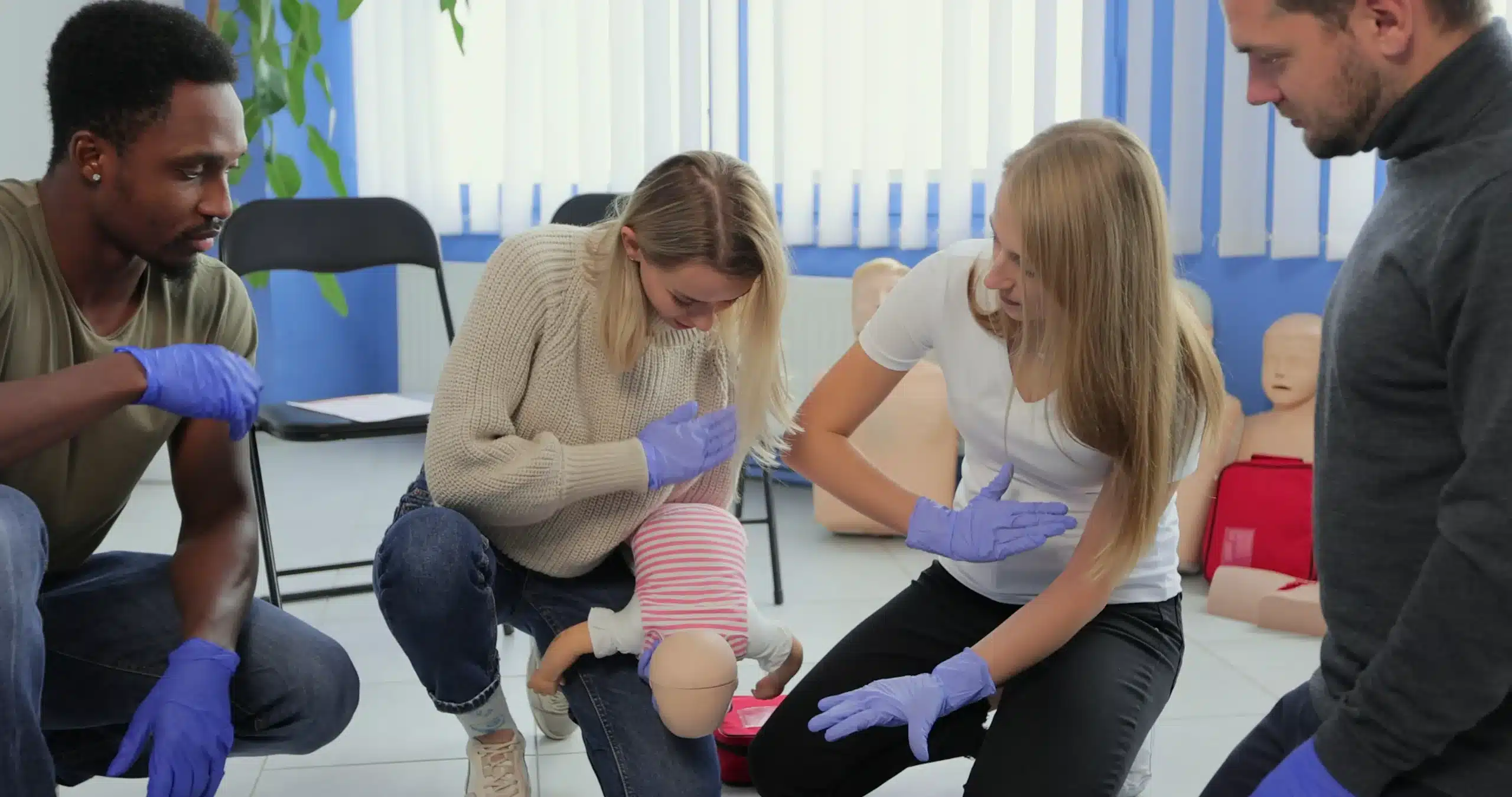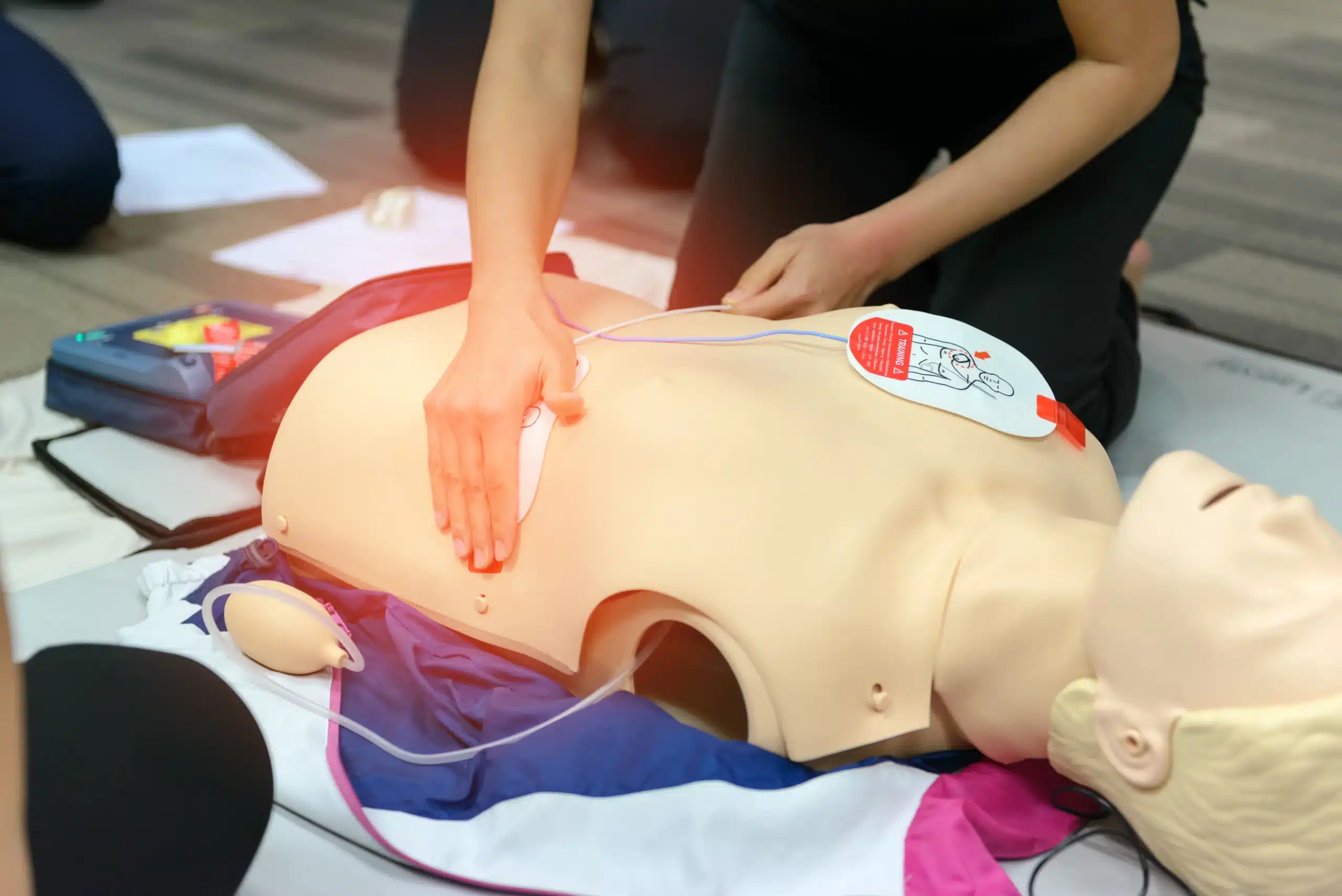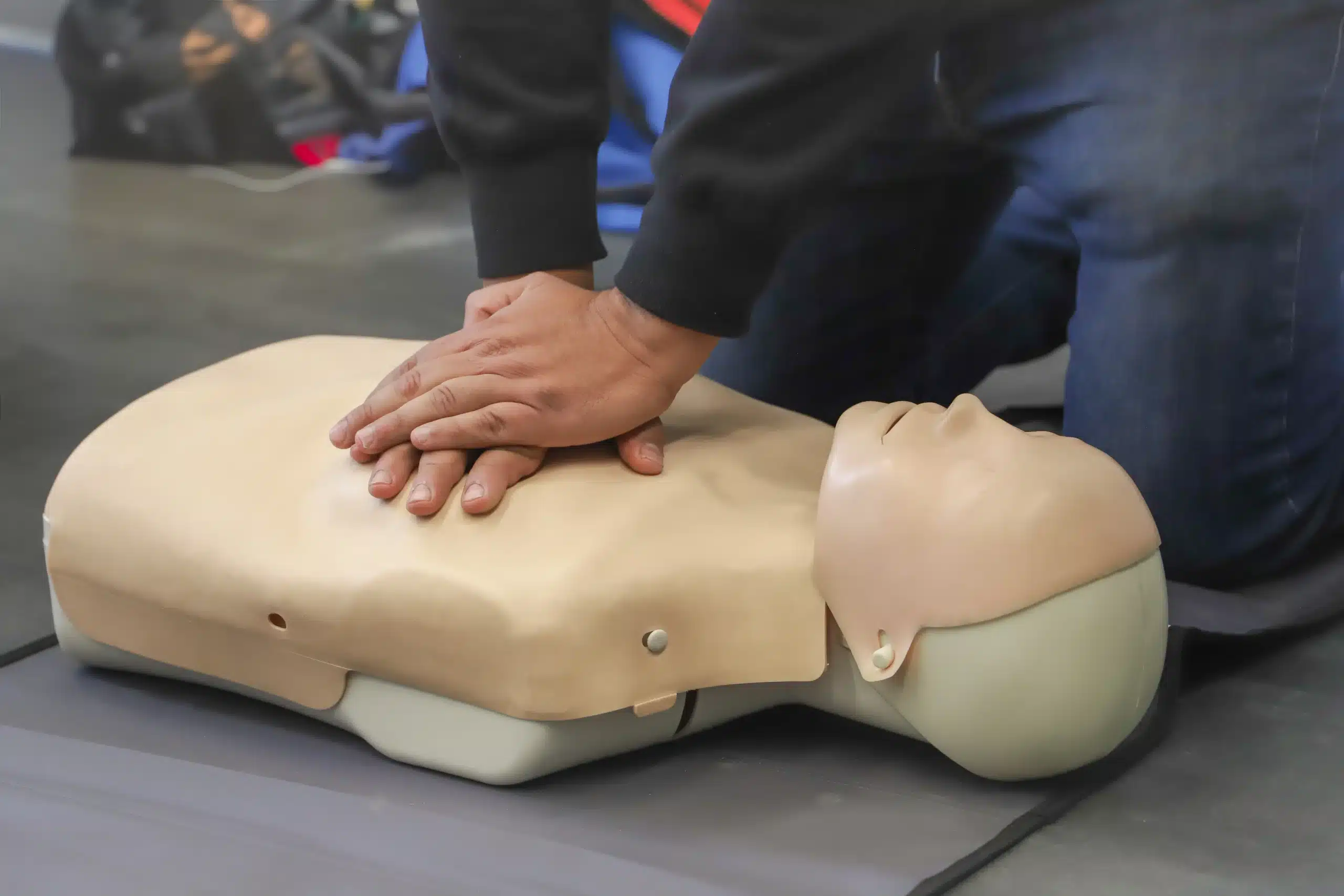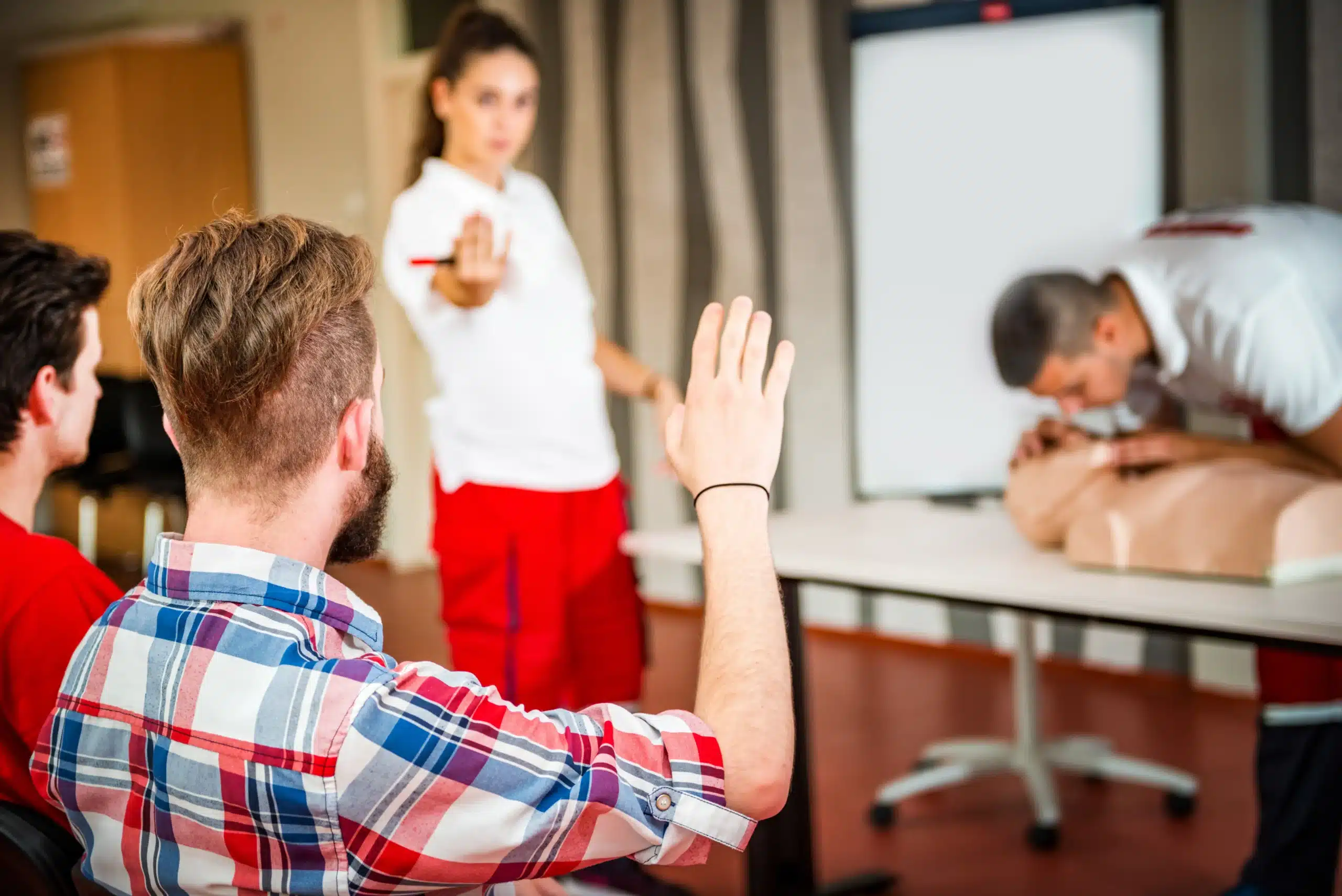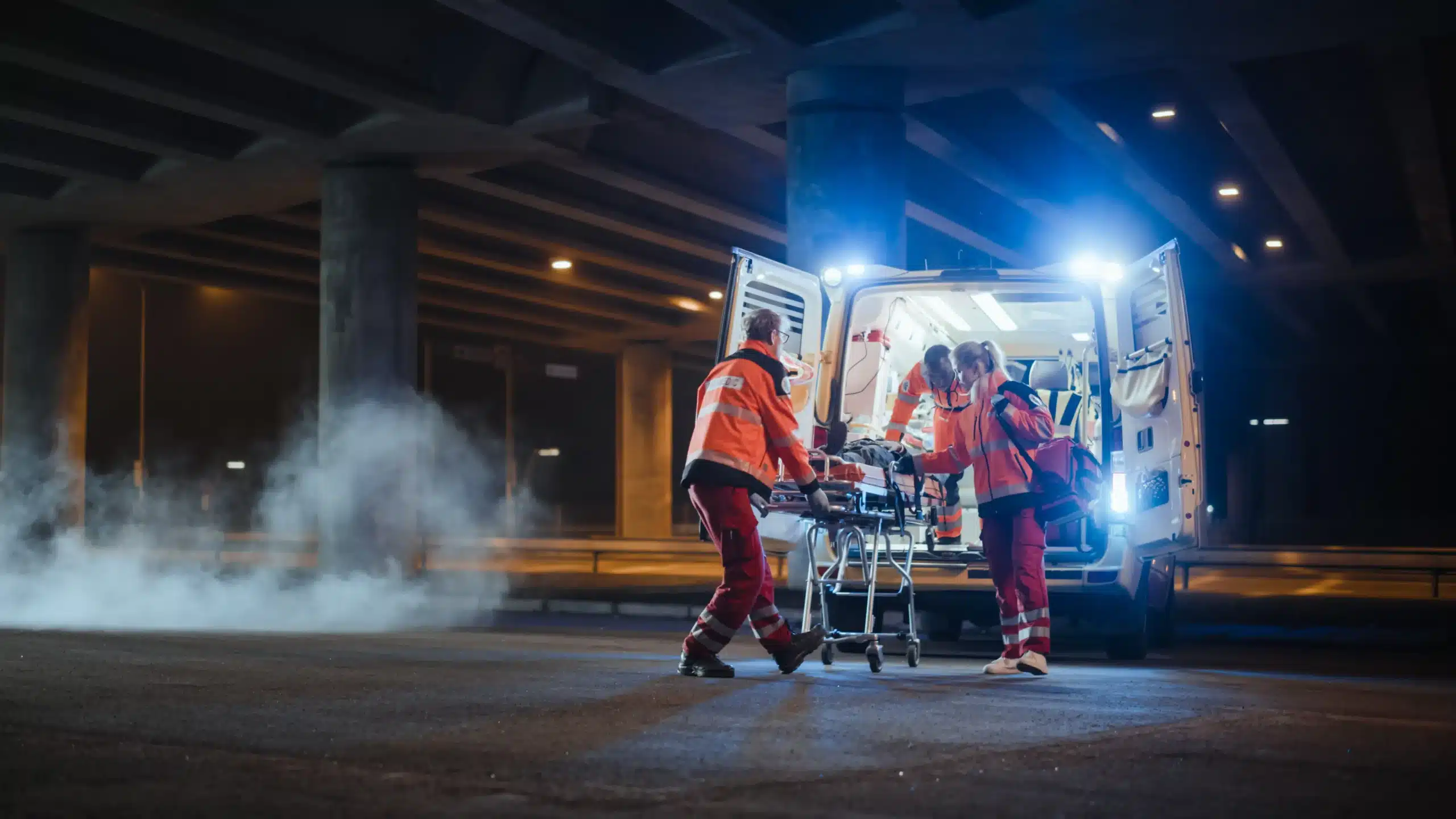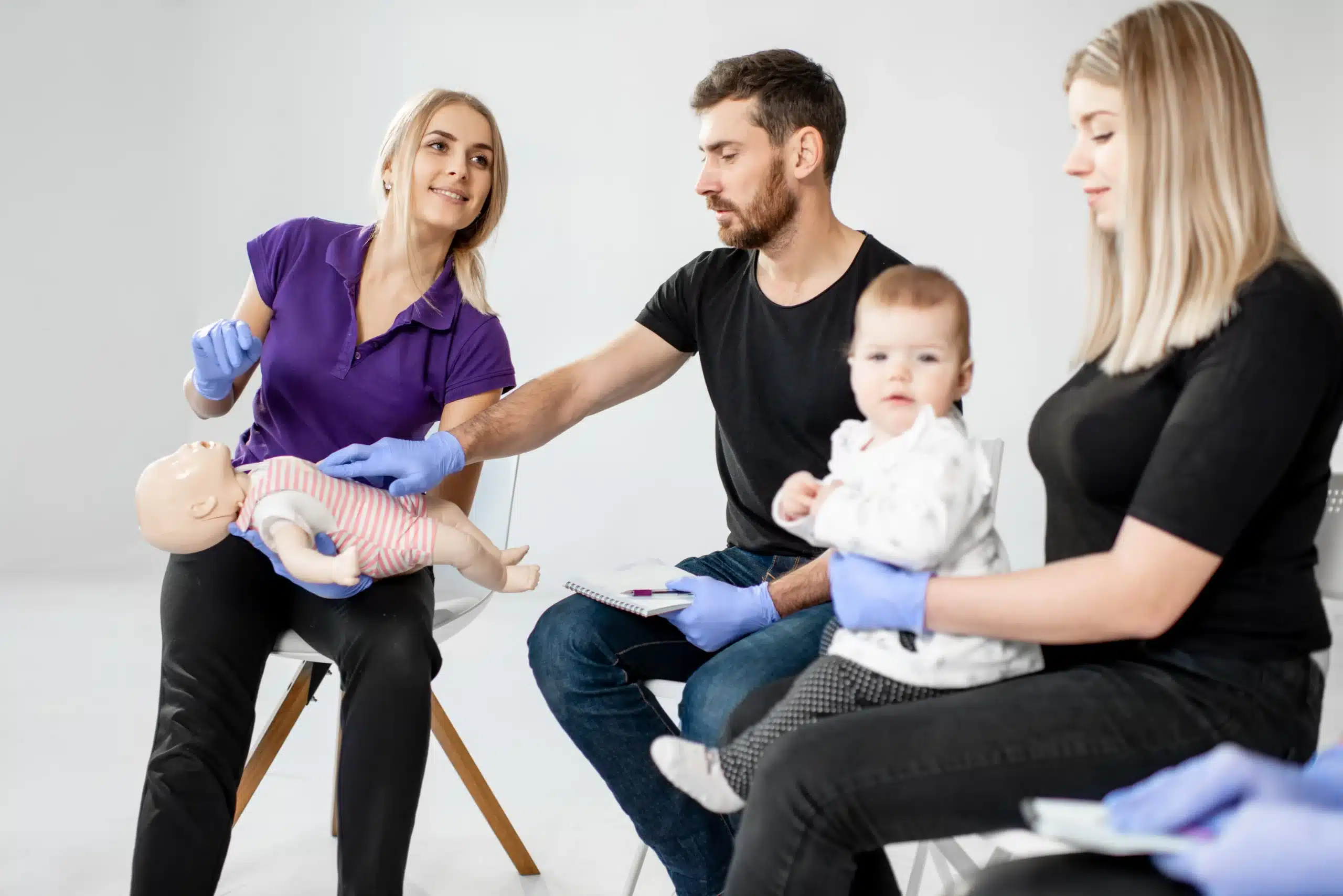The vibrant energy of Nob Hill, with its bustling streets and diverse community, makes it a unique and exciting place to live and work. But in the event of a medical emergency, are you prepared to help? This post emphasizes the critical role of CPR classes in Nob Hill, providing a practical guide to available training options, certification requirements, and what to expect during a CPR course. We’ll explore the different class formats, discuss costs and value, and debunk common CPR training myths, empowering you to take action and become a more prepared member of the Nob Hill community.
Key Takeaways
- CPR skills empower you to save lives: Equipping yourself with CPR training enables you to respond effectively during emergencies, making a real difference in your community.
- Choose the right CPR certification for your needs: Whether you need basic CPR and First Aid or advanced certifications like BLS, ACLS, and PALS, select a course that aligns with your personal and professional goals.
- CPR training is readily available and convenient: Explore various providers in Nob Hill offering different class formats, including in-person, blended learning, and the RQI program, to find an option that fits your schedule and learning style.
Why CPR Training Matters in Nob Hill
CPR training isn’t just a good skill to have—it’s a vital part of community safety and personal preparedness. In a vibrant neighborhood like Nob Hill, with its mix of residents, businesses, and tourists, trained individuals can truly make a difference in emergencies. Knowing CPR and First Aid empowers you to respond effectively in critical moments, potentially saving lives.
Think about it: in those crucial moments after a medical emergency, quick action can dramatically impact the outcome. CPR can help maintain blood flow to the brain and other vital organs until professional help arrives. This immediate response can be the difference between life and death, especially in a densely populated area like Nob Hill. Learn more about the impact of CPR and how it can help save lives.
Group CPR training is also a fantastic way to strengthen community health and safety. When local organizations and businesses participate in group training sessions, it creates a culture of preparedness. This collective effort ensures that more people have the skills to respond to emergencies, making Nob Hill a safer place for everyone.
The accessibility of CPR training in Nob Hill is another huge plus. With daily classes offered at various locations, it’s easier than ever for residents to get certified. The emphasis on American Heart Association (AHA) certification not only boosts your resume but also ensures you’re receiving high-quality, recognized training. This commitment to excellence prepares individuals to confidently handle emergencies and provide effective assistance. Ultimately, investing in CPR training is an investment in the well-being of the Nob Hill community. By equipping more people with these life-saving skills, we create a safer environment for everyone who lives, works, and visits here.
CPR Classes in Nob Hill
CPR certification gives you the skills to respond to emergencies and potentially save lives. Here’s a look at the CPR classes available in Nob Hill:
Adult CPR & AED
Adult CPR and AED training covers the core techniques for responding to cardiac arrest in adults. You’ll learn how to recognize the signs of a heart attack, perform chest compressions, give rescue breaths, and use an automated external defibrillator (AED). These skills are essential in any environment. Safety Training Seminars offers AHA-certified CPR courses in San Francisco.
Child & Infant CPR
Child and Infant CPR classes teach you how to respond to emergencies involving younger individuals. You’ll learn CPR techniques adapted for children and infants, including how to check for a pulse, perform age-appropriate compressions and rescue breaths, and address choking. These courses are essential for parents, caregivers, and anyone working with children. Safety Training Seminars offers these specialized courses in San Francisco.
BLS for Healthcare Providers
BLS for Healthcare Providers is a more advanced CPR course designed for healthcare professionals. It covers a broader range of skills, including team dynamics during resuscitation, advanced airway management, and using bag-mask ventilation. This certification is crucial for doctors, nurses, paramedics, and other healthcare workers. You can find BLS classes in San Francisco.
ACLS & PALS
ACLS (Advanced Cardiovascular Life Support) and PALS (Pediatric Advanced Life Support) certifications are advanced courses for healthcare providers who manage cardiac arrest and other cardiovascular emergencies. ACLS focuses on adult patients, while PALS focuses on children. These courses cover complex algorithms, pharmacology, and team-based resuscitation strategies. Safety Training Seminars offers both ACLS and PALS training in San Francisco.
First Aid
First Aid training complements CPR certification by teaching you how to manage various medical emergencies, from minor cuts and burns to more serious injuries. You’ll learn how to assess a situation, control bleeding, administer basic wound care, and recognize the signs of shock. Many First Aid courses, like those offered by Mercy Medical CPR, also include CPR and AED training.
Top Nob Hill CPR Training Providers
Finding the right CPR class can feel overwhelming, so we’ve compiled a list of trusted providers in Nob Hill. Whether you’re a healthcare professional needing BLS certification or a parent wanting to learn CPR, there’s an option for you.
Safety Training Seminars
Safety Training Seminars offers American Heart Association (AHA) certification courses in CPR, BLS, ACLS, PALS, and First Aid. With classes in four San Francisco locations, including Nob Hill, they make it easy to find a convenient time. Check their website for their BLS, ACLS, and PALS course schedules in Nob Hill. They also offer the NRP course in Concord and San Francisco. Known for excellent customer service and a low-price guarantee, Safety Training Seminars is a solid option.
Bay Area CPR
Bay Area CPR provides AHA CPR, BLS, ACLS, and PALS courses in San Francisco, with classes available daily at their Nob Hill location. This frequent availability makes it simple to fit training into your schedule.
American Red Cross
The American Red Cross offers a variety of CPR and First Aid training courses, with options for workplace training and community classes. This range of courses ensures they have something for everyone, from individuals to large groups.
San Francisco CPR Classes
San Francisco CPR Classes provides various CPR and First Aid training options, including group classes and private sessions. This flexibility works well for Nob Hill residents looking for personalized instruction or group learning.
CPR Society
CPR Society offers comprehensive CPR training and certification courses, focusing on both individual and group training. They aim to meet the diverse needs of the Nob Hill community with various learning formats.
What to Expect in CPR Class
Getting ready for your CPR class? Here’s a rundown of what you can expect, from the course content to the certification process. Knowing what’s ahead will help you feel prepared and confident on class day.
Course Content
CPR classes cover essential lifesaving techniques, including adult, child, and infant CPR, how to use an AED (automated external defibrillator), and what to do for someone who is choking. You’ll learn to recognize the signs of a cardiac arrest and other emergencies. Many courses, like those offered by Safety Training Seminars, are American Heart Association (AHA) certified, covering BLS (Basic Life Support), ACLS (Advanced Cardiac Life Support), PALS (Pediatric Advanced Life Support), and First Aid.
Hands-on Practice
CPR classes aren’t just lectures. You’ll get plenty of opportunities to practice your skills. Expect a combination of online learning and in-person skills sessions. Some programs use the RQI format, which involves 1–2 hours of online learning for BLS and 3–4 hours for ACLS or PALS. The skills testing portion often involves realistic scenarios with computerized manikins. While an instructor may not always be physically present during this hands-on portion, they are typically available by phone to answer questions and provide guidance.
Assessment & Certification
Once you’ve completed the skills testing, you’ll receive your official AHA certification eCard, which is valid for two years. You’ll get this right away, so you can leave the class with proof of your new qualification. This quick turnaround is standard for many providers, including Safety Training Seminars. Maintaining your certification ensures you’re always prepared to help in an emergency.
CPR Class Formats
Choosing the right CPR class format depends on your learning style, schedule, and specific needs. Let’s break down the most common options available to you.
In-Person Training
In-person CPR training provides hands-on experience crucial for developing life-saving skills. These courses, often around four hours long, typically cover Adult, Child, and Infant CPR, AED use, and First Aid. You’ll learn and practice skills in real-time with a certified instructor, giving you immediate feedback and the confidence to respond effectively in an emergency. This format is ideal for those who learn best through direct interaction and hands-on practice. In-person CPR classes are readily available in San Francisco.
Online & Blended Learning
Juggling a busy schedule? Online and blended learning CPR courses offer flexibility. The online portion allows you to complete the theoretical coursework at your own pace, often taking just 1–2 hours for Basic Life Support (BLS). This is followed by a shorter, in-person skills session where you’ll practice what you’ve learned under the guidance of an instructor. This blended approach combines the convenience of online learning with the essential hands-on practice required for effective CPR. Check out these BLS courses in San Francisco for a blended learning option.
RQI Program
The Resuscitation Quality Improvement (RQI) program represents a streamlined and efficient approach to CPR certification. This program involves an online component combined with a hands-on skills evaluation. You can work through the online modules at your convenience, then schedule an in-person skills check. Many training centers offer same-day certification upon successful completion of the skills assessment. This format is particularly beneficial for healthcare professionals needing to maintain their CPR skills and certification efficiently. Learn more about the RQI program and available courses.
CPR Class Costs & Value
CPR training is an investment in lifesaving skills, and understanding associated costs is an important first step. Let’s break down the typical pricing structures for CPR classes, including individual rates, group discounts, and special offers.
Individual Pricing
Individual CPR class costs vary depending on the certification level you need. Basic CPR and AED training can start as low as $45 with providers like CPR Select. More comprehensive courses, such as BLS, ACLS, and PALS, typically range from $75 to $125. At Safety Training Seminars in Nob Hill, you can find these advanced courses starting around $105. Remember, the price often reflects the training depth and the type of certification you receive.
Group & Corporate Rates
If you’re training a team or group of employees, many CPR training providers offer discounted rates. This can be a cost-effective way to ensure everyone in your workplace is prepared for an emergency. Key CPR, for example, offers a 10% discount for groups of six or more. AEDCPR Online also provides discounts for groups of five or more signing up for their online CPR courses. Check with your chosen provider for specific group and corporate rates. It’s always a good idea to inquire about these options to maximize your training budget.
Discounts & Offers
Beyond group rates, keep an eye out for special discounts and offers that can make CPR training more accessible. Safety Training Seminars, for instance, has a Low Price Guarantee for classes in San Francisco County. In addition, some courses, like those offered through Bay Area CPR, come with an American Heart Association Pediatric CPR and First Aid certification—a valuable credential for childcare providers in California. These added certifications can enhance your training value and open up more professional opportunities. Be sure to ask your training provider about any current promotions or bundled packages. You might be surprised at the savings you can find!
CPR Certifications
CPR certification validates your skills and knowledge in performing cardiopulmonary resuscitation. Several recognized certifying bodies exist, with the American Heart Association (AHA) and the American Red Cross among the most prominent. Understanding the different certifications available helps you choose the right course.
AHA Certification
The American Heart Association (AHA) offers various certification courses to equip people with the skills to respond effectively in medical emergencies. These courses cover various levels, from basic CPR for the general public to advanced life support for healthcare professionals. AHA certifications like Basic Life Support (BLS), Advanced Cardiovascular Life Support (ACLS), and Pediatric Advanced Life Support (PALS) are widely accepted. They provide comprehensive training, including recognizing life-threatening emergencies, performing high-quality CPR, and working as part of a resuscitation team. You can explore AHA courses on their website.
Red Cross Certification
The American Red Cross, another trusted organization, also provides CPR and first aid training. Their courses are recognized nationally and offer essential lifesaving skills for individuals and healthcare providers. While both AHA and Red Cross certifications are valuable, some employers or organizations may have specific requirements. Check which certification best aligns with your professional goals. You can find more information about Red Cross training on their website.
Renewing Your Certification
CPR skills and knowledge can fade, so renewing your certification is crucial. Most CPR certifications, including those from the AHA and Red Cross, are valid for two years. Renewal typically involves a refresher course and demonstrating proficiency in the required skills. After successfully completing the renewal process, you’ll receive an updated certification card, ensuring you’re prepared to respond confidently in an emergency. Check with your certifying organization or training provider for specific renewal requirements. Safety Training Seminars offers information on course preparation and certification.
Choosing Your CPR Class
Professional Needs
When choosing a CPR class, think about your specific job requirements. For healthcare providers like nurses, doctors, and EMTs, an American Heart Association (AHA) BLS course is often mandatory. Safety Training Seminars offers AHA-certified BLS, ACLS, and PALS classes right here in Nob Hill, making it easy to get the training you need to meet professional standards. With classes offered daily, it’s easy to fit training into even the busiest schedules. Plus, their low-price guarantee helps you get quality training that fits your budget. Beyond standard BLS, consider adding ACLS and PALS certifications to your skillset if your role might involve advanced cardiac life support or pediatric care. These certifications can open doors to more specialized roles and demonstrate your commitment to high-quality patient care. Check with your employer or professional organization to see which certifications are recommended or required for your career path.
Personal Training
Learning CPR and First Aid isn’t just for healthcare professionals—it’s a valuable life skill for everyone. Knowing how to respond in an emergency can make a real difference for your family, friends, and community. Whether you’re a parent, teacher, coach, or simply someone who wants to be prepared, a CPR class can empower you to act confidently in a crisis. Safety Training Seminars offers a range of courses, including CPR and First Aid, designed for all skill levels. Their convenient daily classes and multiple locations make it easy to find a class that fits your schedule. And if you’re looking to train a group, like a school club, a neighborhood group, or even a group of friends, ask about group discounts. Learning CPR together can strengthen your community and create a network of prepared individuals ready to respond when it matters most. You can also check out their CPR and First Aid classes to build essential skills and confidence.
CPR Training Misconceptions
Let’s clear up a few common misconceptions about CPR training. These myths can prevent people from learning this lifesaving skill, so it’s important to address them head-on.
“CPR is Only for Medical Professionals”
I hear this one a lot, and it’s simply not true. While medical professionals frequently use CPR, anyone can learn it. In fact, bystander CPR is often the first link in the chain of survival for someone experiencing cardiac arrest. It’s crucial for anyone to be able to step in during those first few critical minutes before professional help arrives. Debunking this myth empowers more people to learn CPR and potentially save a life. Check out these CPR training resources to learn more.
“CPR Can Hurt Someone”
Another misconception is the fear of causing harm, like broken ribs. While rib fractures are a possibility during CPR, not performing CPR when someone is in cardiac arrest is far more dangerous. The potential for a rib fracture is a small risk compared to the alternative—doing nothing. CPR certification resources explain how the benefits of performing CPR far outweigh the risks.
“Online CPR Training is Enough”
Online CPR courses are a great way to learn the basics, but they don’t replace hands-on practice. You need to feel what it’s like to give chest compressions, open an airway, and deliver rescue breaths. In-person training offers crucial hands-on experience and feedback from a certified instructor to ensure you’re prepared for a real-life emergency. Think of it like learning to drive—you wouldn’t just watch videos. You need to get behind the wheel. CPR is the same: you need practical experience.
CPR Training & Nob Hill’s Safety
CPR training is essential for any community, but it’s especially important in a bustling neighborhood like Nob Hill. With its mix of residents, businesses, and tourists, public spaces can become the site of unexpected medical emergencies. Having people trained in CPR is crucial for immediate response, potentially bridging the gap until professional help arrives. CPR skills empower individuals to take action and make a real difference when seconds count. Equipping yourself with these skills not only benefits you but also contributes to a safer environment for everyone.
Safety Training Seminars, an American Heart Association (AHA) Training Center, offers convenient daily CPR classes right here in Nob Hill. Their courses cover essential lifesaving techniques and provide official AHA certification cards, valid for two years, demonstrating the quality and recognized standard of their training. They also offer group discounts, making training more accessible and affordable for families, businesses, or community groups. A more prepared community is a safer community, and accessible CPR training plays a vital role in that.
Related Articles
- Why CPR is Vital in Healthcare
- Workplace CPR Certification in San Francisco: Your Guide
- CPR Certification in San Francisco: Your Complete Guide
- CPR Courses Near Me: Your Complete Guide
- Your Guide to CPR Classes in Daly City
Frequently Asked Questions
What kind of CPR classes are available in Nob Hill? Nob Hill offers a range of CPR classes, from basic CPR and AED training to more specialized courses like BLS for Healthcare Providers, ACLS, PALS, and First Aid. These courses cater to various needs, whether you’re a healthcare professional, a parent, or simply someone who wants to be prepared for emergencies. You can find classes covering adult, child, and infant CPR, ensuring you have the skills to respond to any situation.
How much do CPR classes typically cost? CPR class costs depend on the level of certification and the training provider. Basic CPR and AED classes can start as low as $45, while more advanced courses like BLS, ACLS, and PALS usually range from $75 to $125. Many providers offer group discounts, so if you’re training a team or group, be sure to ask about potential cost savings. Look for providers like Safety Training Seminars, which offer a low-price guarantee.
What is the difference between AHA and Red Cross CPR certification? Both the American Heart Association (AHA) and the American Red Cross offer recognized CPR certifications. While both organizations provide valuable training, some employers or organizations may prefer one over the other. It’s always a good idea to check which certification best aligns with your professional goals or specific requirements. Both certifications typically involve a combination of coursework and hands-on skills practice.
What can I expect during a CPR class? Expect a mix of theoretical learning and hands-on practice. You’ll learn how to recognize the signs of a medical emergency, perform CPR techniques for different age groups, and use an AED. Many classes also include First Aid training. You’ll have opportunities to practice your skills on manikins and receive feedback from a certified instructor. The goal is to equip you with the confidence and skills to respond effectively in a real-life emergency.
How do I choose the right CPR class for me? Consider your individual needs and goals. If you’re a healthcare professional, look for an AHA-certified BLS, ACLS, or PALS course. If you’re a parent or caregiver, a basic CPR and First Aid class might be suitable. Think about your learning style and schedule. In-person classes offer direct interaction with an instructor, while online and blended learning options provide more flexibility. The RQI program is a streamlined option for healthcare professionals needing efficient recertification.


